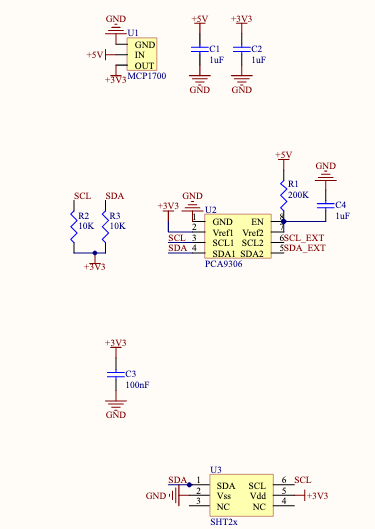Other Parts Discussed in Thread: PCA9306, , P82B96, P82B715, TCAN1042H, TCA9517
Hi, for one of my customer i have some of those sensor based on the HTU21 Temperature and Humidity Sensor.
The sensors uses all 4 pairs for power and data, each pair is used for: VCC, GND, SCL and SDA.
Actually those sensors are placed in industrial environment with a lot of noise and they are away 20/25m from the main "controller"...the main controller has many a PCA9306 multiplexed in order to enable the right channel and do the measurement, this works without any issue...and i'm a little bit puzzled...becouse this cable lenght on CAT5e cable originates something like 1600pF of capacitance.
Anyway, i've bought an ESP32POE-ISO from Olimex and wired a breakout board of PCA9306 using 10k resistors pullup on the MCU side and 330ohm resistor on bus side: in my lab environment this solution works, but when i go "away-of-my-bench" in a industrial environment the i cannot read anything.
Really, i don't know what i can do in order to make this work: the "old" gateway has I2C interface identical to the new one, except for the power management: the old one uses a POE PD extraction module (PEM1305 from informart) , the new Olimex ESP32-POE-ISO uses the SI3402 in order to operate power extraction.
You think that placing a ISO1540 on the Bus side of the PCA9306 can help me to solve that issue?



